#Manchu Dynasty
Text

Flower Study, Yun Bing, dates uncertain (17th or 18th century, Qing Dynasty)
#art#art history#Asian art#China#Chinese art#Imperial China#Qing Dynasty#Manchu Dynasty#Yun Bing#female artists#floral painting#flowers#17th century art#18th century art#Metropolitan Museum of Art
201 notes
·
View notes
Text








qizhuang旗装 fashion
167 notes
·
View notes
Photo
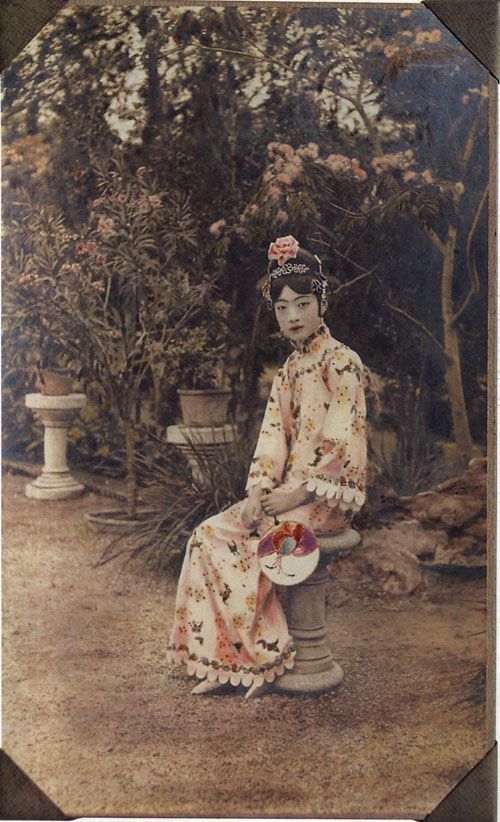





Photograph of the Qing Dynasty Empress Wanrong (1906-1946) taken in the Forbidden City, 1920s
#qing dynasty#mdpchina#china#20th c. china#manchu#chinese costume#chinese dress#asian costume#costume#photography
89 notes
·
View notes
Text
Man, just thinking of the dynamic between Kiku and Yao, the politics of men’s haircuts from the Opium Wars onwards, and how two nations who have known each other for so long see things. When Kiku first cuts his hair short in the western style upon the dawn of the Meiji-era, it’s naturally a tad strange and unnerving. But it’s a transition he’s able to make, especially because the western world is simultaneously unfamiliar but also familiar through his longtime relationship with the Netherlands and rangaku (Dutch studies). Short hair marks him as severing his ties with the old Sinocentric order, and what feels incredibly alienating eventually symbolises power, adaptability and recognition, in the aftermath of his victory in the first Sino-Japanese war.
But of course, it is the opposite for Yao. It symbolises defeat, it is the admission of failure, that he is well and truly no longer the standard bearer of civilisational prestige. I think one moment where it really sinks in for Kiku that the old order is truly upside down isn’t just the moment he wins—but seeing Yao himself later at the peace conference, tense and weary, but now with his own hair neatly cropped short, in drab western clothes so different from the more colourful silk garb of a Qing official—as the ink dries on the Treaty of Shimonoseki. A mourner at his own funeral, a pale shadow of the forceful, proud and towering empire whose presence used to fill the room effortlessly, in whose shadow Kiku used to walk.
#hetalia#hws china#hws japan#hetalia headcanons#as always one of my favourite topics…the politics of haircuts and the alienating force of westernisation#frankly i feel like Yao took a hit to his ego when defeated by Manchuria (the founding of the Qing dynasty)#but he told himself that the Manchu in many ways were still adopting structures of his imperial order (just taking over it)#losing to Kiku whose military has westernised and industrialised is a different thing
144 notes
·
View notes
Note
Hello Audrey, hope you are well!
This is regarding the recently aired Kangxi-era drama The Long River. It has very few scenes featuring women, I didnt complete it yet but gathered some pictures because I was curious about the fashion. I'd love to hear what do you think about these?
Styling of Empress Dowager Xiaozhuang, grandmother of Kangxi Emperor.
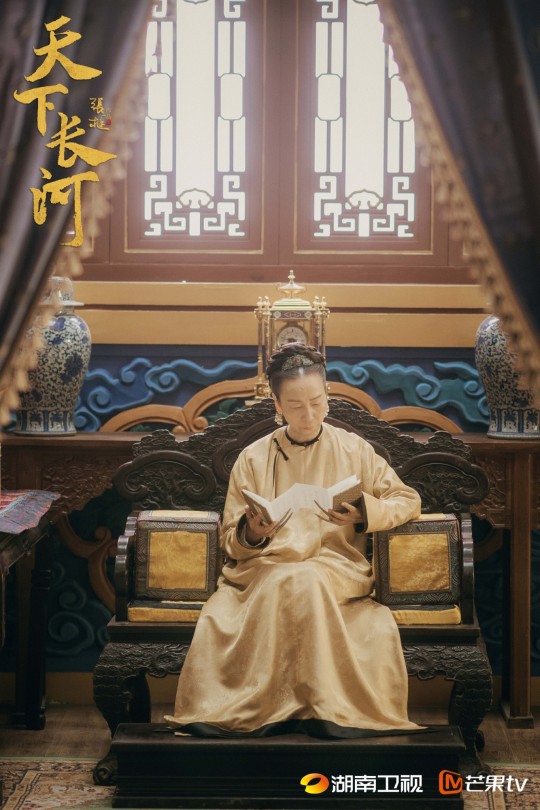
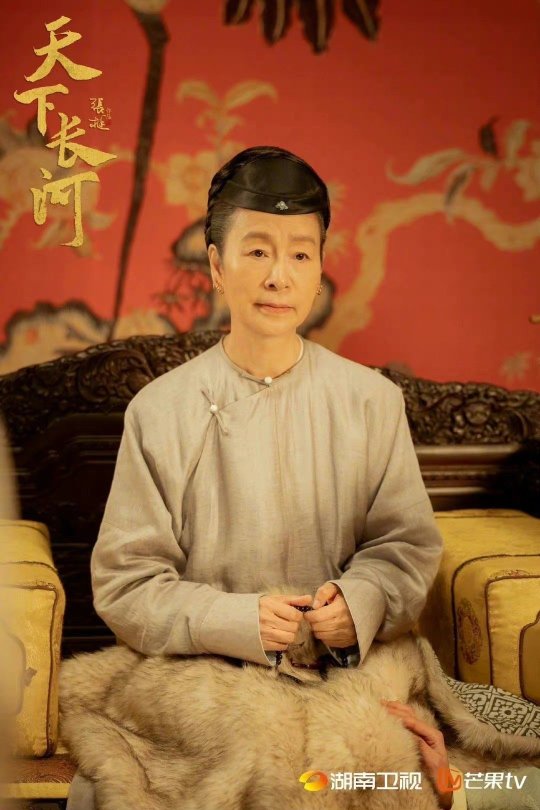
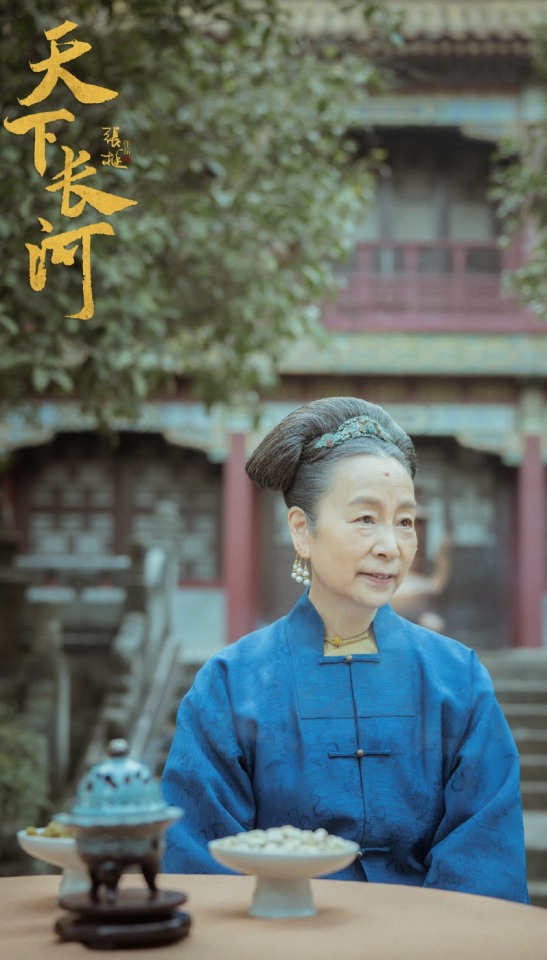


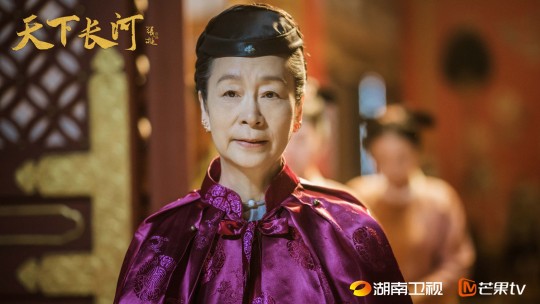
Styling of Kangxi's mom
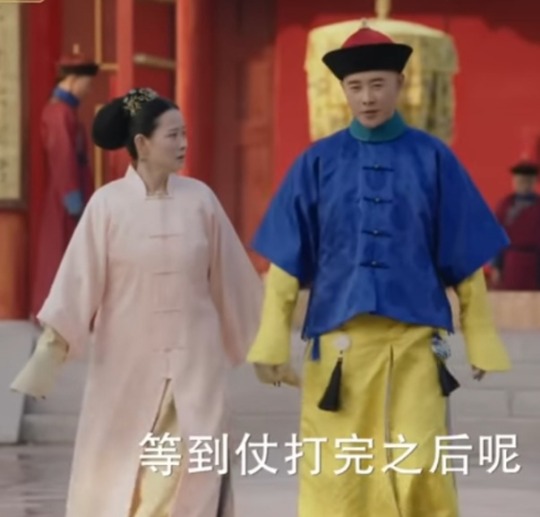
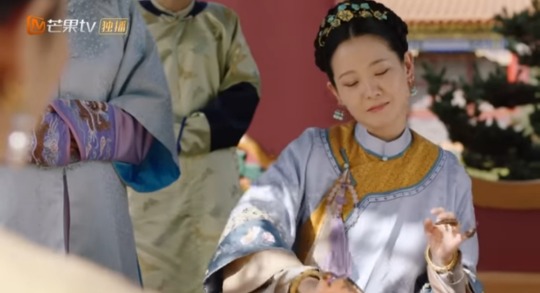
Some servants (left) and a middle class (probably) woman (right)

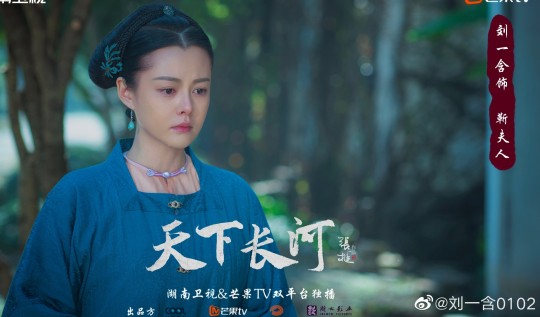
Thank you very much for your time!
These look pretty solid! Maybe the first time I've seen 17th century Manchu clothing represented with honesty. The costumes in the second and third last images look like rented guzhuang costumes, I'm not sure why there is a discrepancy in the quality of costumes?

Portrait of Empress Xiaozhuang (1613-88). I think this is the reference they used for the plain collarless robes, which are quite well tailored and true to history.

Another similar styling from the 17th century.

Portrait of Empress Xiaozhaoren (1609-89), showing the square collar jacket.
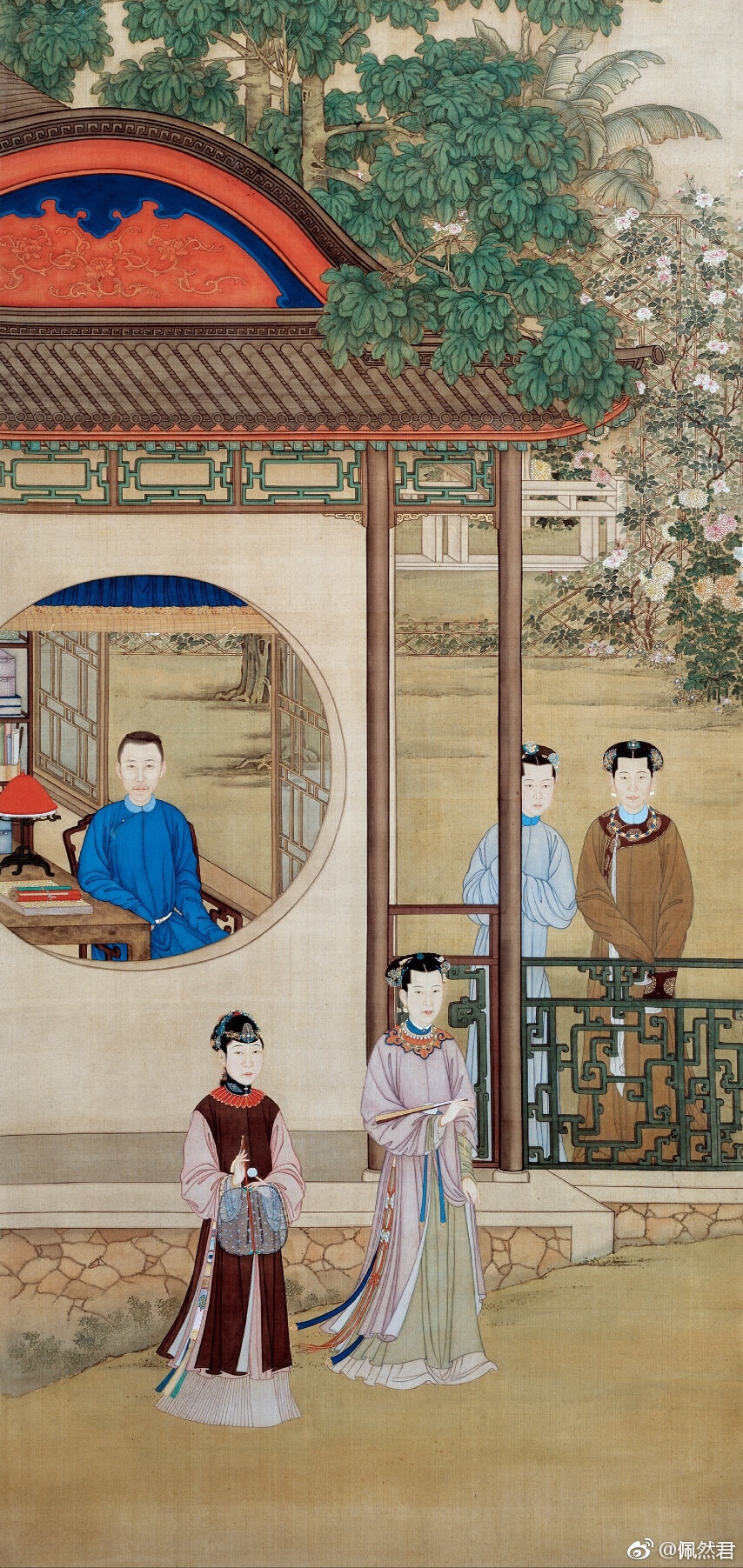
The guzhuang looking costumes might be a reference to this sort of stuff (the two ladies in the top right), but this is from the Qianlong era and 18th century. Not sure if something similar would have been done in the 17th, but either way the sleeves of the drama costumes look too short and a bit awkward.
90 notes
·
View notes
Text
fun part of watching crouching tiger, hidden dragon (2000) with my friends last night was they all got so agitated when they saw the characters’ queues that i had to pause the movie and give a brief lecture on the history of hair in china so that they could continue the film actually concentrating on the plot
#and tbh i’m glad i gave that context bc it also did a good job explaining the han/manchu tensions#that have a strong presence in a lot of literature set in the qing dynasty including crouching tiger#funny thing is though i don’t remember even noticing the hair the first time i watched crouching tiger circa age 13#ryddles
14 notes
·
View notes
Text
Qing Dynasty mandarin winter robes, from the Beijing Palace Museum collection:
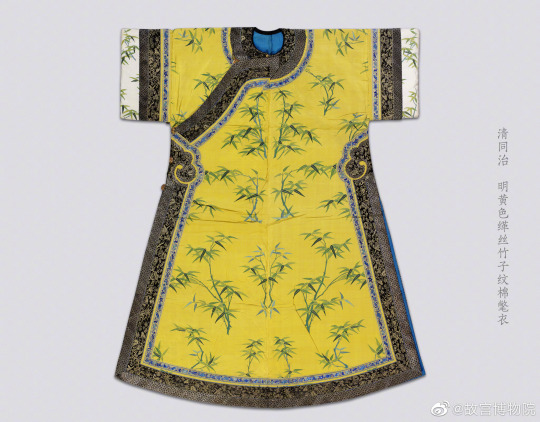
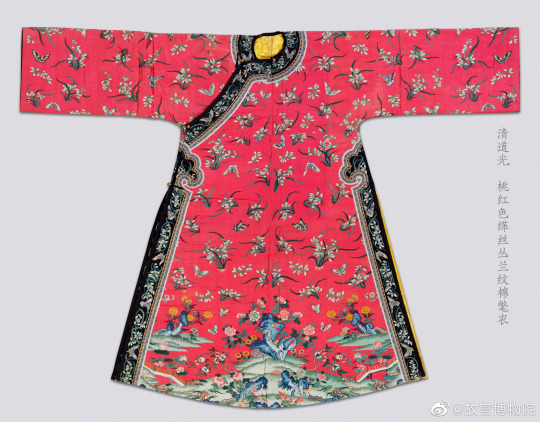
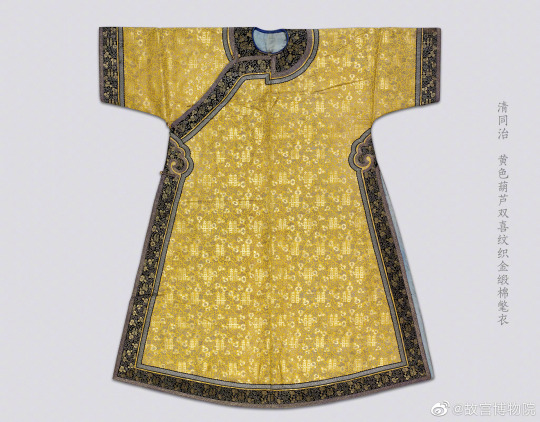
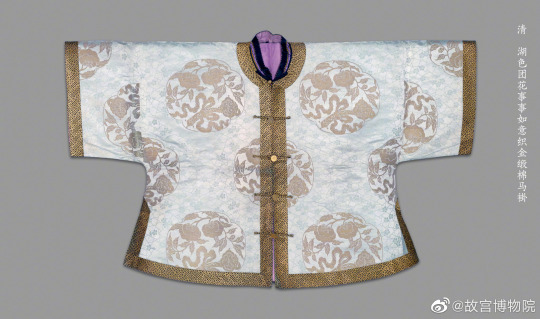

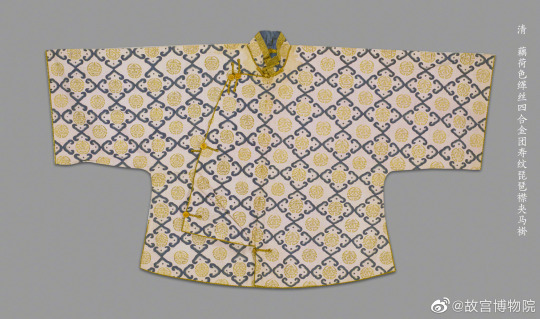

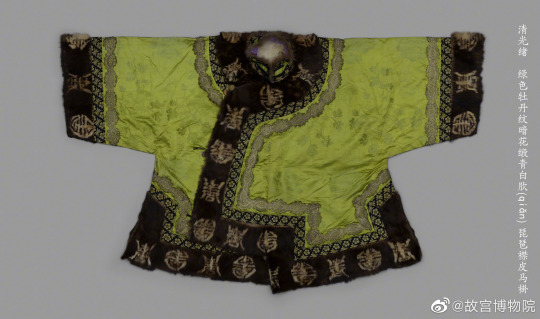
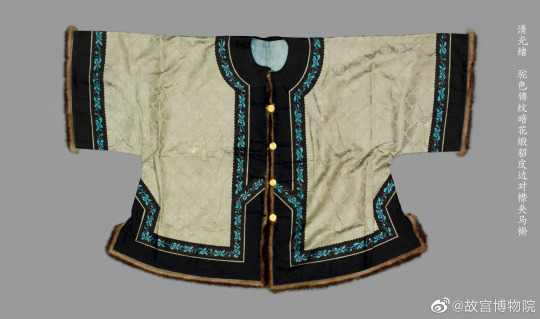
#china#qing dynasty#historical fashion#early modern history#winter clothing#forbidden city#beijing palace museum#artefacts#chinese fashion#manchu fashion#daicing gurun#textile#asian costume#silk#satin#mink#history
17 notes
·
View notes
Text
hold on a sec ik the My Dearest team did their research but it looks like they really did their research. the Qing invaders are speaking Manchurian
#tv: my dearest#my dearest#mbc my dearest#kdrama#local gay watches My Dearest (and is subsequently f*cked up).txt#local gay watches k-dramas.txt#i had a phase last year where i lived on the Wikipedia page for the Manchu people for three weeks doing research#for a fantasy WIP i've been working on for years#and it's always emphasized that the culture during the Qing dynasty became heavily Sinicized and the number of native#speakers of Manchurian declined. it's a highly endangered language rn so i didn't expect to see it here#but there it is#the hobby historian in me is pleased sksksksk
4 notes
·
View notes
Text
Reading the notes was a mistake, like, if you read an LGBT+ historian saying, 'They were probably queer, but I can't say with 100% certain that they're gay by modern Western standards that are very different from historical standards, so it's somewhat ambiguous' and interpreted it as them saying, 'I am 100% sure they are 100% straight' or 'Gays didn't exist in history', then that's a you problem where either your reading comprehension is terrible, you're deliberately reading things in the worst way possible in order to be correct, or ironically, you just revealed that to you, straight IS the default.
#this is also an issue when white lgbt+ look at non-white cultures#like no not every chinese man in the qing dynasty was gnc or transfem#just bc they wore their hair in a long braid that westerners would associate with women#that was a manchu practice enforced on the han people#and had nothing to do with femininity or female identity#cultural and temporal context is so fucking important
2 notes
·
View notes
Text
China's Ming dynasty collapsed that year when a warlord took Beijing, and as civil war spiraled out of control, a former Ming general decided that inviting the Manchus – seminomads from Manchuria – to cross the Great Wall and reestablish order would be the lesser of numerous details.
"Why the West Rules – For Now: The patterns of history and what they reveal about the future" - Ian Morris
#book quote#why the west rules – for now#ian morris#nonfiction#china#chinese history#ming dynasty#collapse#40s#1640s#17th century#warlord#beijing#civil war#spiraling#manchu#manchuria#great wall of china#lesser of two evils#order
0 notes
Photo
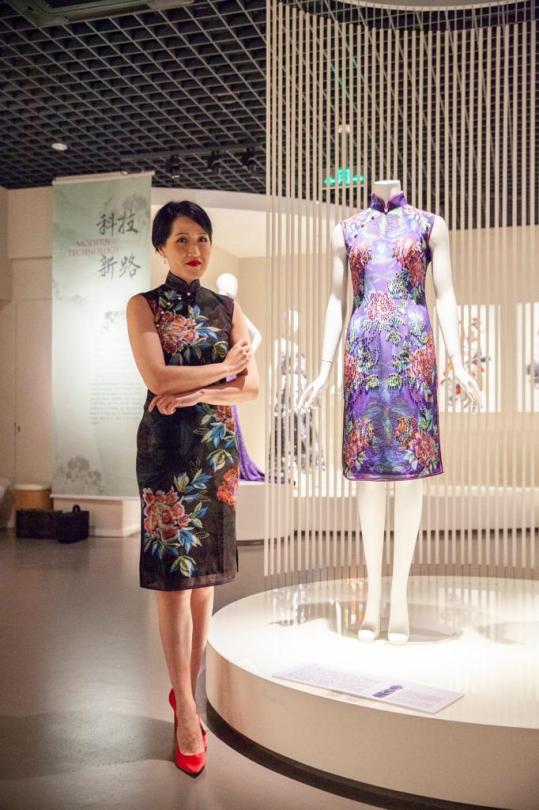





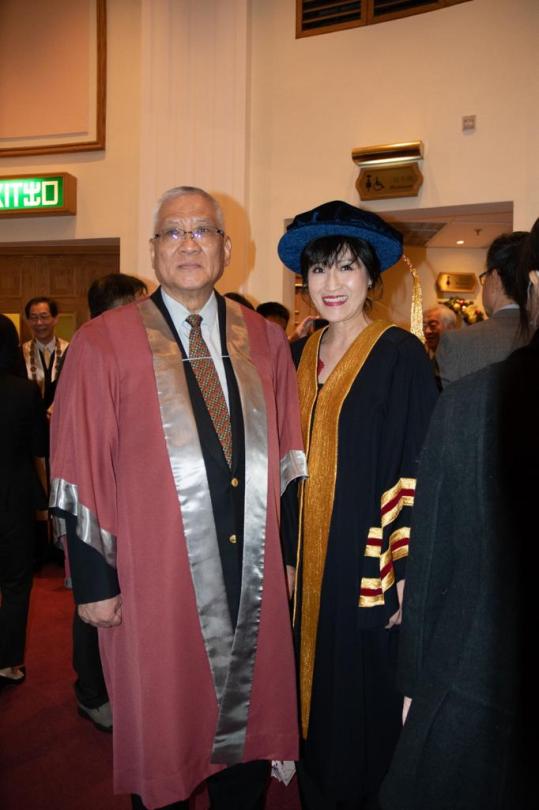



The Young Woman Leader In Hong Kong Karen Chan Picks The Cultural Battle Of Preserving Cheongsam: “I Don’t Want Cheongsam To Become Another Collective Memory Of Our Generation!”
German Pool has been a famous brand of electrical appliances in Hong Kong since 1982. It is a family business and the prominent figure is Karen Chan(陳嘉賢)—not only for her contribution to the industry of Hong Kong, but also for her cultural offerings in the form of ‘Cheongsam’(長衫) or ‘Qipao’(旗袍).
Cheongsam is a Chinese dress worn by women and men which takes inspiration from the ethnic clothing of the Manchu people in the North. For woman, cheongsam is most often seen as a long, figure-fitting and one-piece garment with a standing collar, an asymmetric left-over-right opening and two side slits, and embellished with Chinese frog fasteners on the lapel and collar. It was developed in the Ching Dynasty and evolved in shapes and design over years.
Karen said, “I love cheongsam in its traditional form but want to make it respond to the modern life too.” She runs a cultural rather than fashion business ‘Sparkle’ which designs, makes and promotes cheongsam.
Karen studied in Sacred Heart Canossian College. She went to University of Washington for her first degree and New York University for her second degree. In 2000, she returned to Hong Kong to work but soon moved to Vancouver and got hitched. In 2006, she came back to Hong Kong with a family to assist in the family business. In 2009, Karen obtained the master’s degree in Marketing from Chinese University of Hong Kong. Her son is 12 years old now. Karen is tall, slim and represents 2 things, character and competence.
She, as usual, had an unweary smile on her face, “Time flies and I am making up for lost time. I have too many things that I should do.” I stared at her, “Karen, you work too hard! Apart from being a businesswoman and taking care of a family, you sit on government consultation committees and governing boards of universities.” Her eyes were twinkling with mirth, “Don’t worry. The great consolation that I have is making beautiful cheongsam for others and myself.”
She said, “Our past is never dead to us, until we have brushed it aside. I respect traditions especially the old arts and crafts of Hong Kong. Tradition does embody valuable accumulated knowledge, and provide a sense of belonging to our great city. But, I think tradition is not a way of saying ‘we must do it this way’. If you want to keep something old, you will have to let it somehow grow younger and newer. Great cultures in Hong Kong like dim sum, architectures and kung fu are always a fantastic combination of old and new. I really don’t want cheongsam to be called another ‘collective memory’ after it is gone forever.”
I asked, “Why is cheongsam culture uniquely Hong Kong?” She patted her head, “During the 1910s to 1920s, cheongsam commanded her cultural prosperity in 2 major cities, namely Shanghai and Hong Kong because people there were rich and fashionable. It was important for ladies to look trendy and classy. Shanghai was later under communist rule. Fashion basically disappeared and the focus was on the communist cadre look. Clothing available was mass-produced and functional, leaving little room for individuality or femininity. Hong Kong remained a free city. Cheongsam continued to flourish here and it never died out. We had cheongsam of uniquely different designs, styles and materials in the golden days of 1950s to 1970s. Almost all women wore cheongsam. It is sad that since the 60s, western clothes were seen by women as a sign of modernity and liberation. Fewer and fewer women wore cheongsam. Luckily, we still got a small circle of ladies who loved cheongsam and it has become a specialized type of clothing that fits only a niche market. My mission now is to keep cheongsam alive and through my public education effort, I want to tell people in Hong Kong that removing our misconceptions of and prejudice against cheongsam is an important cause!”
I put my final question to her, “What is the future gauntlet that you have to take up?” She sighed, “Wow! Too many challenges ahead. There are 4. I want to prove that even westerners, given their bigger body size, can wear cheongsam and look pretty. Then, I wish to ensure that the knowledge and skills associated with this traditional artisanry can be passed onto the future generations so that the art will continue to survive. Thirdly, I want to be a respectable fashion designer who can create cheongsam as a piece of up-to-date beauty. My last wish is humble: I would be able to keep my cheongsam business from falling. It is expensive to make a cheongsam due to many factors, for example, that the best cheongsam must be handmade and the fabric must be 100% silk. Cheongsam market is however small and a lot of customers are experts in cheongsam. I do hope I can meet their expectations.”
Karen Chan aspires to be a defender of Hong Kong’s cultural heritage. Hong Kong is no more just an international financial centre in Asia. Our civilization is already a rich pool of brilliant beliefs, customs and knowhows accumulated in the course of 19th to 22nd Century.
The problem of modern life is the claim that, for the sake of progress, we have to lose local traditions at a faster pace than that of preserving, not to mention the extra loss accelerated by forces such as globalization and national assimilation. A woman’s greatest asset is her beauty and cheongsam is the wonderful dress that helps a woman capitalize on her physical and emotional beauty.
MLee
Chinese Version 中文版: https://www.patreon.com/posts/chen-jia-xian-de-76769559?utm_medium=clipboard_copy&utm_source=copyLink&utm_campaign=postshare_creator&utm_content=join_link
Sparkle Collection Fashion Show https://youtu.be/1SqDDu_MJZM Acknowledgement – Sparkle Collection
Sparkle Collection Cheongsam 2023 https://youtu.be/RSQGXX-R-7E Acknowledgement – Sparkle Collection
Cheongsam Etiquette https://youtu.be/dx5d2hQKiWs Acknowledgement – Sparkle Collection
Maggie Cheung’s Cheongsam in Movie《In the Mood for Love》 https://youtu.be/KloZiML4jQ8 Acknowledgement – San Shi Ma
Karen Chan Interview https://youtu.be/SP5LuLssrlQ Acknowledgement - hkfederation
#Manchu#Qipao#Artisanry#German Pool#Ching Dynasty#Sacred Heart Canossian College#University of Washington#New York University#Frog Fastener#Cultural Heritage
0 notes
Text
Cultural Fashion: Katara's Ba Sing Se Dress

Katara's Ba Sing Se dress is inspired by changyi robes (氅衣), which were full-length gowns worn by Manchu noblewomen during the Qing Dynasty (1644–1911). Characteristics of changyi include high slits on both sides of the dress, prominent trim along the openings of the robe, and a rounded cross collar (pianjin/偏襟). Around the beginning of the 20th-century, standing collars and more fitted silhouettes also became common on changyi and other Manchu women's clothing. Overall, Katara's Ba Sing Se dress possesses many characteristics of a late Qing Dynasty changyi.
However, similar to her headdress, her robe isn't 100% historically accurate. The standing collar doesn't appear to be directly attached to the pianjin opening and her sleeves appear to be modeled more after hanfu than qizhuang (Qing Manchu clothing). Nonetheless, her design still alludes to a very specific period in Chinese fashion history, rather than simply being a generic "Asian-esque" dress. Plus, the design is just lovely!
Fun Fact: The cloud pattern on Katara's dress is known as xiangyun (祥雲) or "lucky clouds" in Mandarin. Clouds are considered auspicious imagery in Chinese culture due to the Mandarin word for cloud (yún / 雲) sounding similar to the Mandarin word for good fortune (yùn / 運).
Like what I’m doing? Tips always appreciated, never expected. ^_^
https://ko-fi.com/atlaculture
833 notes
·
View notes
Text
[Ming Dynasty]Chinese Armor:Life of female general 秦良玉/Qin Liangyu
The only female general recognized by the Chinese Orthodox Histories,The Twenty-Four Histories (Chinese: 二十四史)
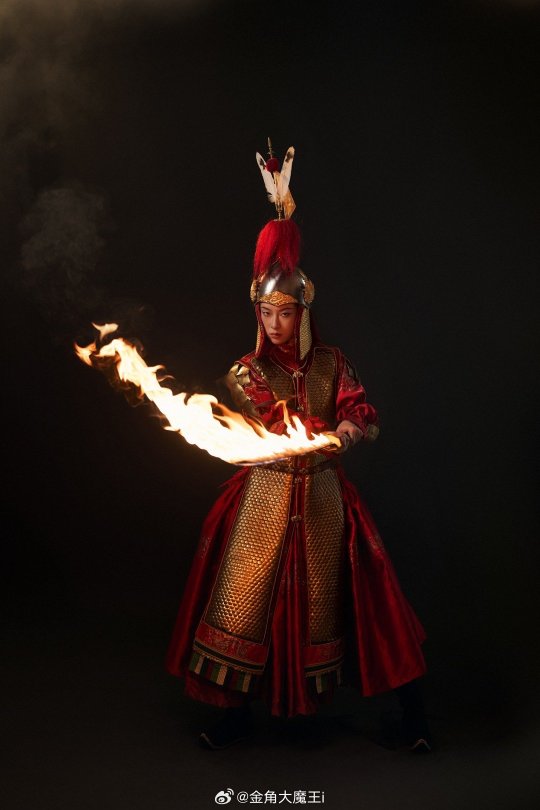
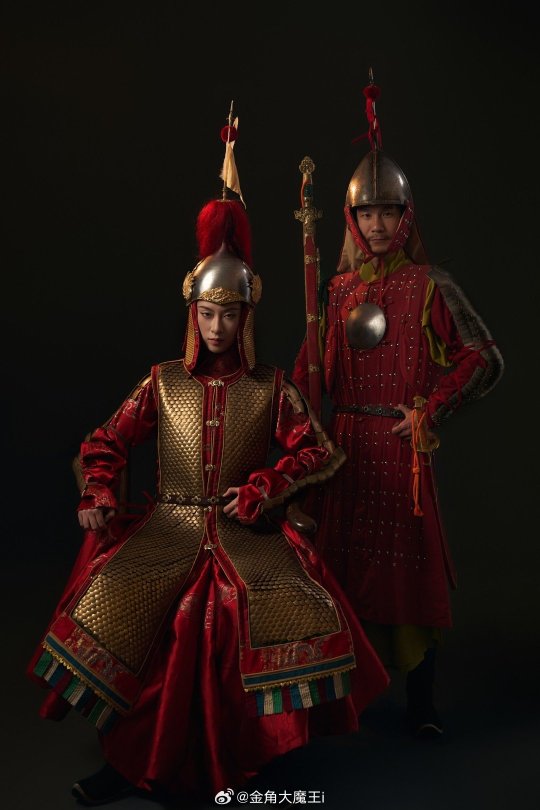

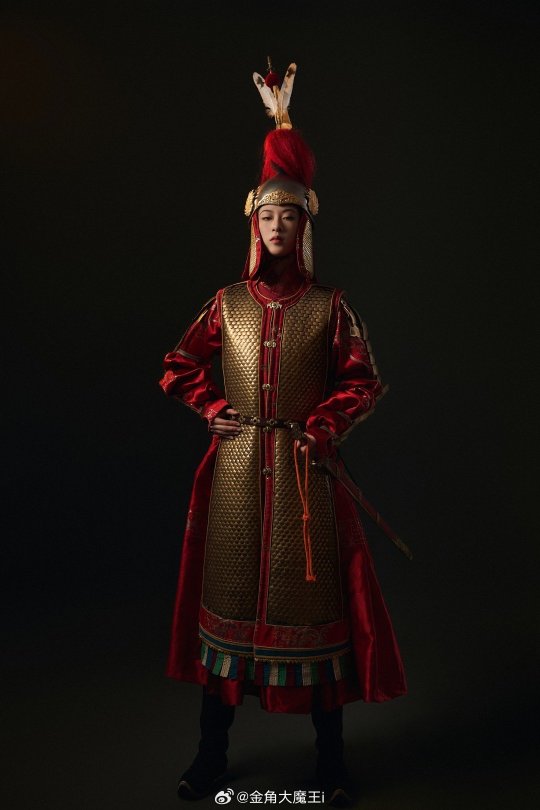
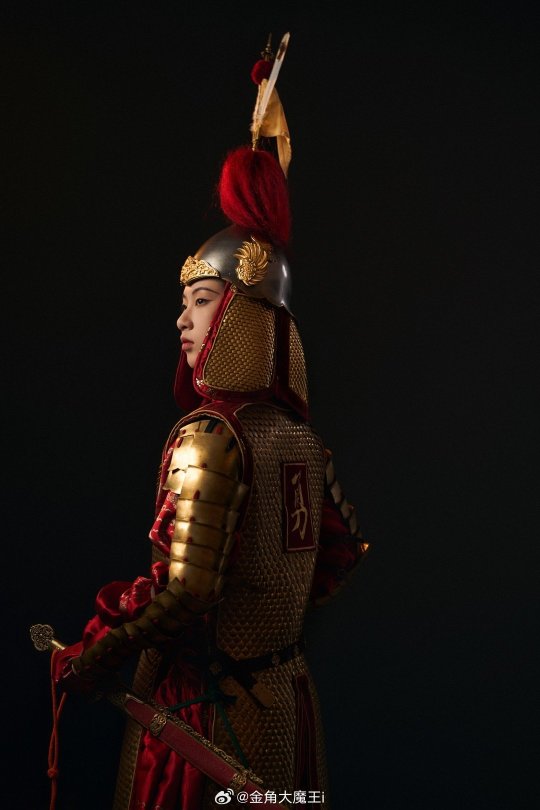
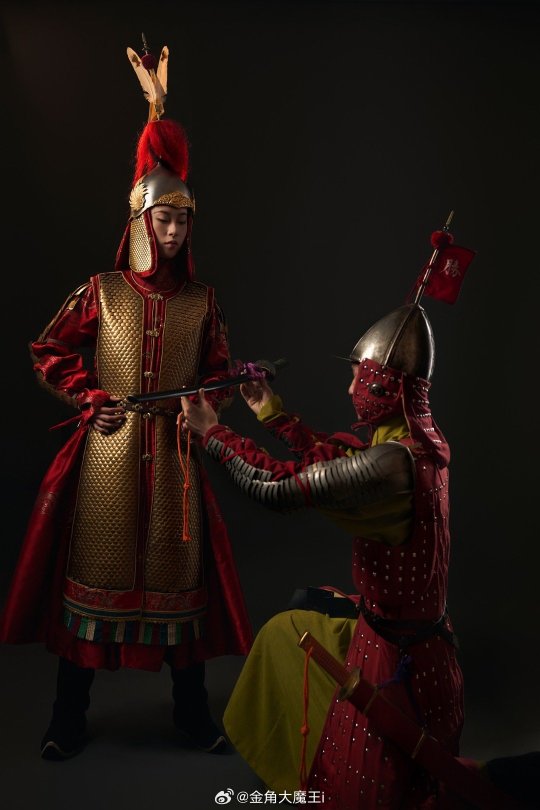
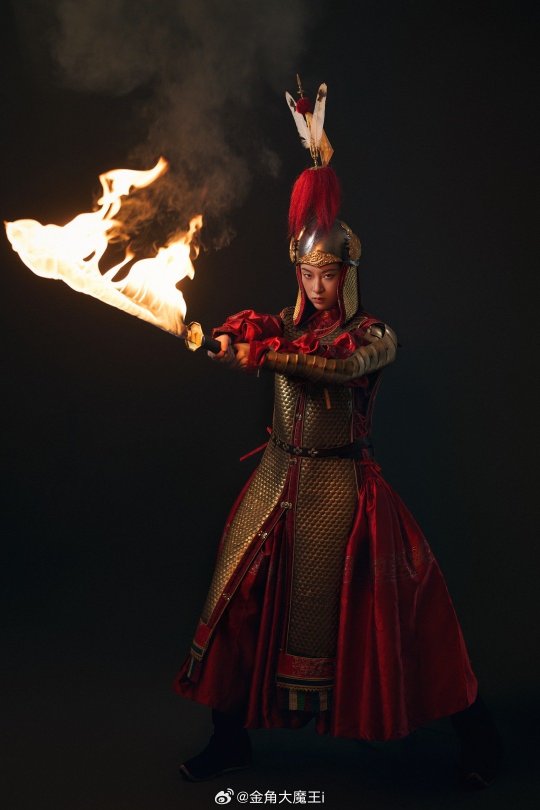
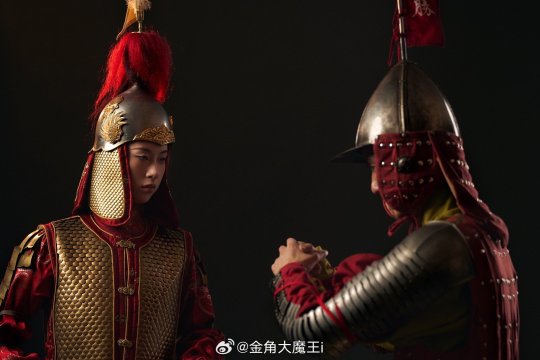

【Historical Artifact Reference】:
China Ming Dynasty Royal Painting:《出警图/Departure Herald》
In this handscroll is a great imperial procession making its way to pay respects at the imperial tombs. Departing from the Te-sheng (Victory) Gate of the Peking city wall, the artists here depicted shops along the way and the appearance of ceremonial guards to the final destination of the imperial tombs, the final resting place for Ming dynasty emperors 45 kilometers from the capital at Mt. T'ien-shou. Departure Herald is actually accompanied by another long handscroll painting entitled Return Clearing. That work depicts the process of the tomb sweeping and inspection tour. Usually considered as a pair, they are collectively known as Departure Herald and Return Clearing.
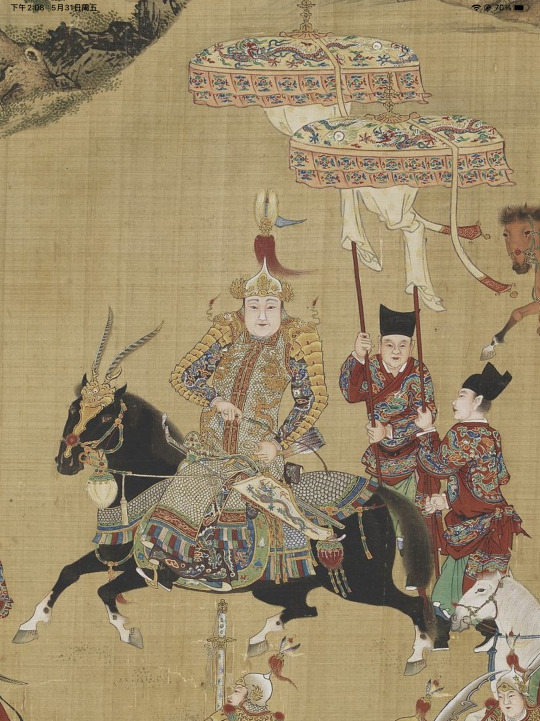
↑Emperor Wanli of the Ming Dynasty of China, Zhu Yijun, wearing armor
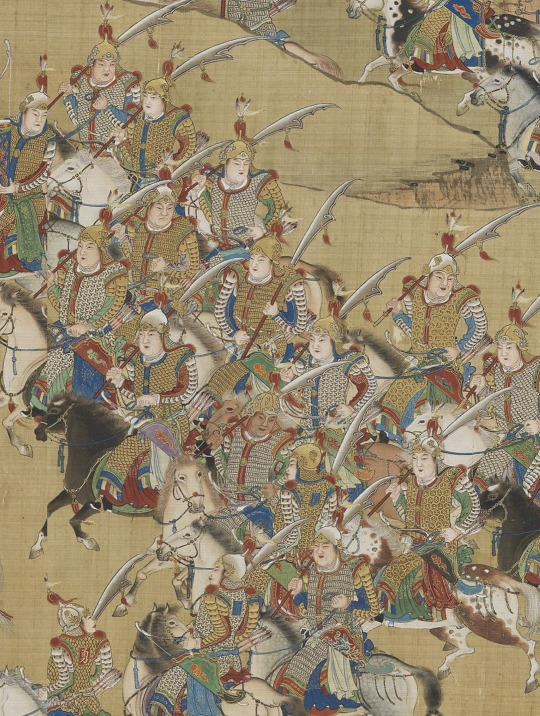
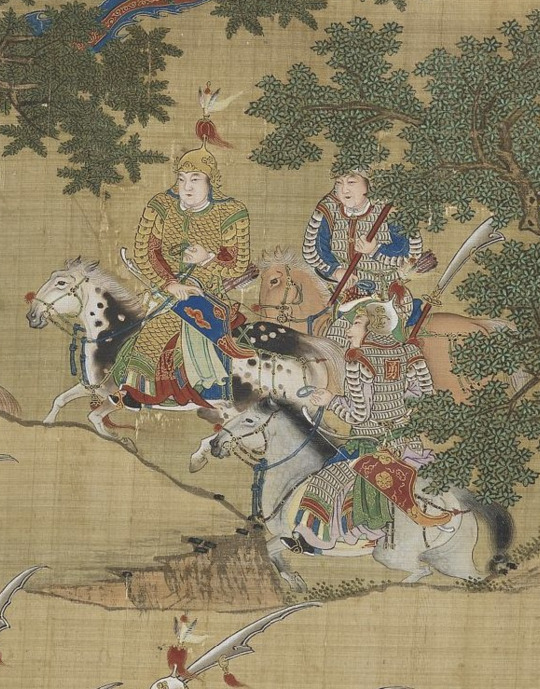
The emperor's guards and ceremonial guards, a good depiction of Ming dynasty armor
【秦良玉/Qin Liangyu:The only female general recognized by the Chinese emperor and official history】
Qin Liangyu (1574–1648), courtesy name Zhensu, was a female general best known for defending the Ming dynasty from attacks by the Manchu-led Later Jin dynasty in the 17th century.
Early life and education
Qin Liangyu was born in Zhongzhou (忠州), which is in present-day Zhong County, Chongqing.Her father, Qin Kui (秦葵), obtained the position of a gongsheng (貢生) in the civil service examination. He believed that girls should receive the same education as boys, so he made Qin Liangyu study history and the Confucian classics with her brothers. He also taught them martial arts. Qin Liangyu learnt martial arts more deeply than her brothers and became proficient in archery and horse-riding. She was also known for her skill in poetry.
Marriage to Ma Qiancheng
In 1595, Qin Liangyu married Ma Qiancheng (馬千乘), the tusi and xuanfushi (宣撫使; "Announcing and Pacifying Commissioner") of Shizhu County, and accompanied him in minor battles against local warlords in the southwestern border of the Ming Empire. They had a good marriage and he often sought her advice.In 1599, when Yang Yinglong (楊應龍) started a rebellion in Bozhou (播州; present-day Zunyi, Guizhou), Ma Qiancheng brought 3,000 riders with him to suppress the revolt while Qin Liangyu brought an additional 500 to support her husband. They successfully quelled the rebellion and destroyed the rebels' camps.
In 1613, Ma Qiancheng offended Qiu Chengyun (邱乘雲), an influential court eunuch, and ended up being arrested and imprisoned. He died in prison later. Qin Liangyu succeeded her husband as the xuanfushi of Shizu County. Those under her command were known as the White Cavalry (白杆兵).
Resisting rebel forces in Sichuan
In 1620, Qin Liangyu's elder brother, Qin Bangping (秦邦屏), led 3,000 White Cavalry to Liaodong to resist invaders from the Manchu-led Later Jin dynasty. He was killed in action at the��Battle of Hun River (渾河之戰).
In 1623, Qin Liangyu assisted Ming forces in suppressing the She-An Rebellion in Sichuan and Guizhou led by She Chongming (奢崇明) and An Bangyan (安邦彥). In the following year, her elder brother, Qin Minping (秦民屏), was killed in battle by An Bangyan's forces.
In 1630, when Later Jin forces besieged the Ming capital, Beijing, Qin Liangyu led forces from Sichuan to reinforce the capital. The Chongzhen Emperor showered her with praises in poetry and presented her with four poems as she passed through Beijing. In 1634, when Zhang Xianzhong's rebel army invaded Sichuan, Qin Liangyu and her son, Ma Xianglin (馬祥麟), led their troops to attack the rebels, defeated them at Kuizhou (夔州; present-day Fengjie County, Chongqing) and drove them away. In 1640, Qin Liangyu defeated another rebel force led by Luo Rucai (羅汝才) in Kuizhou and Wushan. In recognition of her contributions to the Ming Empire, the Chongzhen Emperor appointed her as the Crown Prince's Guardian (太子太保) and awarded her the title "Marquis Zhongzhen" (忠貞侯; lit. "Loyal and Chaste Marquis").
Later life and death
The Ming Empire was overthrown in 1644 by rebel forces led by Li Zicheng, and its former territories were conquered by the Later Jin dynasty (later renamed to Qing dynasty). Some Ming loyalists formed a remnant state, the Southern Ming dynasty, in southern China to resist the Qing dynasty. Its nominal ruler, the Longwu Emperor, also granted Qin Liangyu a marquis title. Meanwhile, Zhang Xianzhong invaded Sichuan again, and Qin Liangyu attempted to resist him, but was defeated and forced to retreat, allowing Zhang to conquer most of Sichuan. She did however prevent her soldiers from surrendering to Zhang.
Qin Liangyu controlled part of Shizhu County and her policy of agricultural self-sufficiency made her region attractive for refugees. She helped about 100,000 refugees to settle down in Shizhu.
Qin Liangyu died in 1648 and was buried in present-day Yachun Village, Dahe District, Shizhu County, Chongqing. She was given the posthumous name "Zhongzhen" (忠貞; lit. "Loyal and Chaste") and was survived by her son, Ma Xianglin (馬祥麟).
Legacy
Qin Liangyu's life, along with her weapons and armour, is showcased in a museum in Shizhu County, Chongqing. A statue of her is in the Ganyu Hall of the Shibaozhai in Zhong County (that was preserved during the Three Gorges Project).Together with Hua Mulan, Liang Hongyu and He Yufeng, Qin Liangyu is one of the most well-known female warriors and heroines in China.
In the Twenty-Four Histories, Qin Liangyu was also the only woman whose biography was listed among the biographies of court officials and generals.
________________
📸Photo & Model :@金角大魔王i & @��穿汉服的曠先生
🔗Weibo:https://weibo.com/1763668330/O3aKR4CSv
________________
#chinese hanfu#Chinese Armor#Female General#秦良玉/Qin Liangyu#hanfu#hanfu accessories#hanfu_challenge#chinese traditional clothing#china#chinese#chinese history#china history#漢服#汉服#中華風#金角大魔王i
348 notes
·
View notes
Note
Hi I was wondering what type of clothing do Beijing Opera actors wear? Is it specific type of costumes or variation of hanhfu?
Hi! Thanks for the question, and sorry for taking ages to reply!
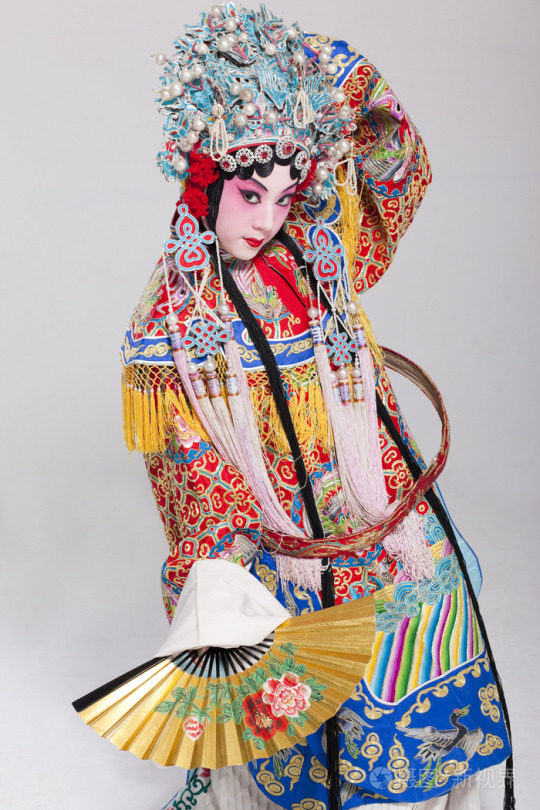
Beijing opera actors wear Chinese opera costumes called 戏服/xifu (lit. “theatrical clothing”), which can be considered a variation of hanfu depending on the style. I have more information in my post here, please check it out! ^^
I also found this Zhihu article (in Chinese) with pictures and descriptions of different styles of Beijing opera costumes as worn by specific characters. According to the article, Beijing opera costumes are mainly based on Ming dynasty hanfu styles, with some theatrical modifications. Because Beijing opera arose and developed during the Qing dynasty, the costumes may also have characteristics of Qing dynasty and Manchu clothing. The article is very informative and I highly recommend it for those interested in Beijing opera costumes!
Below - pictures of various Beijing opera costumes from the article:
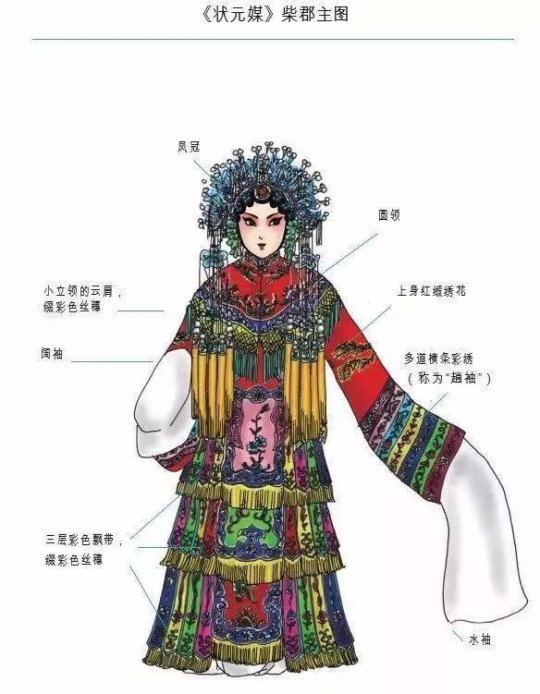
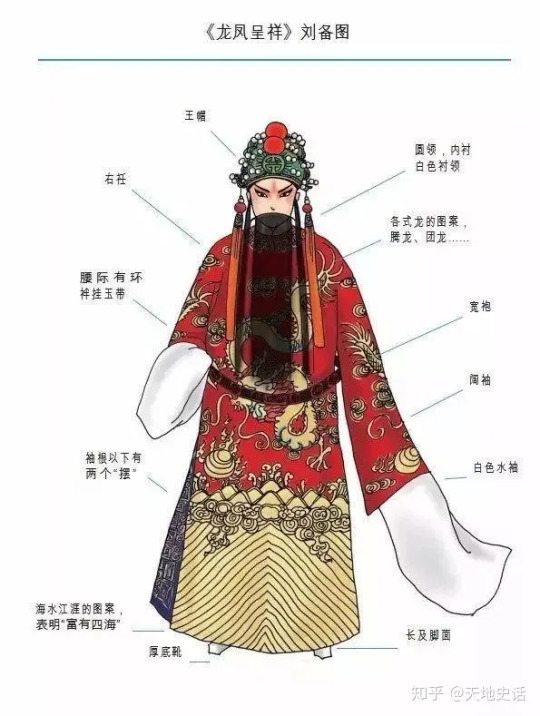

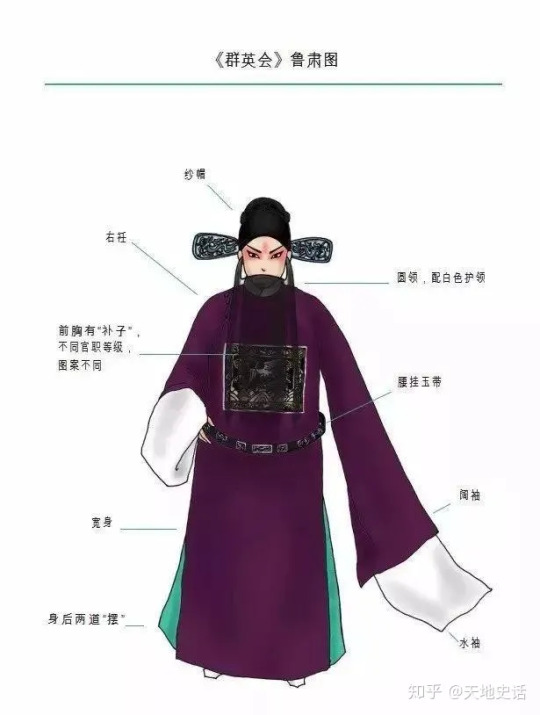
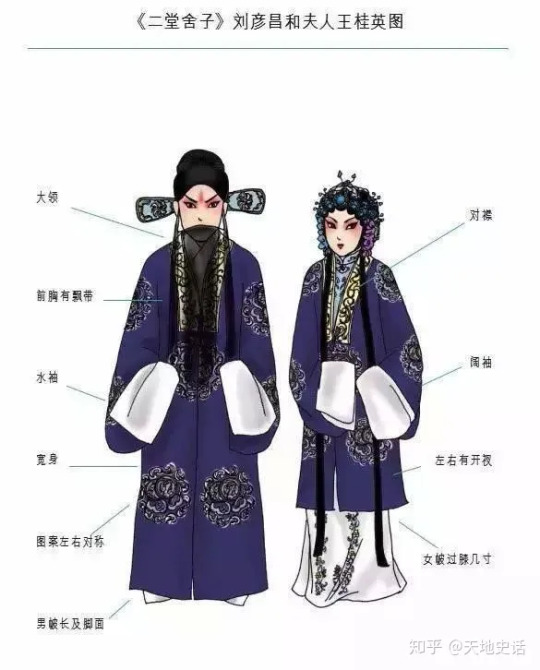


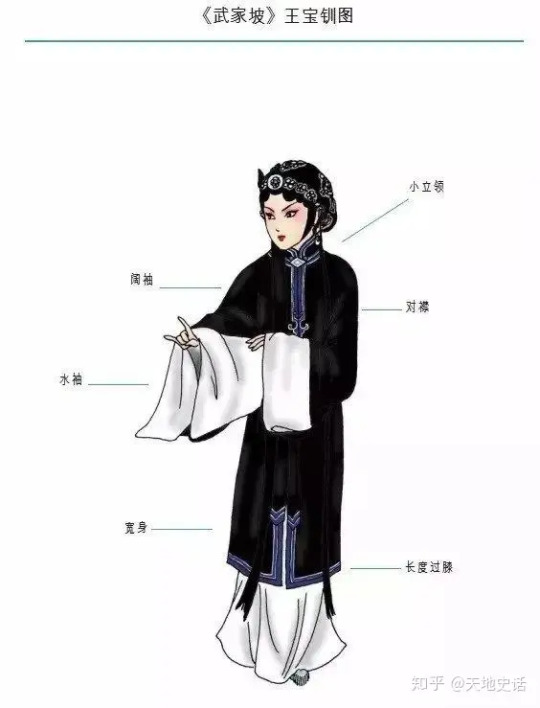
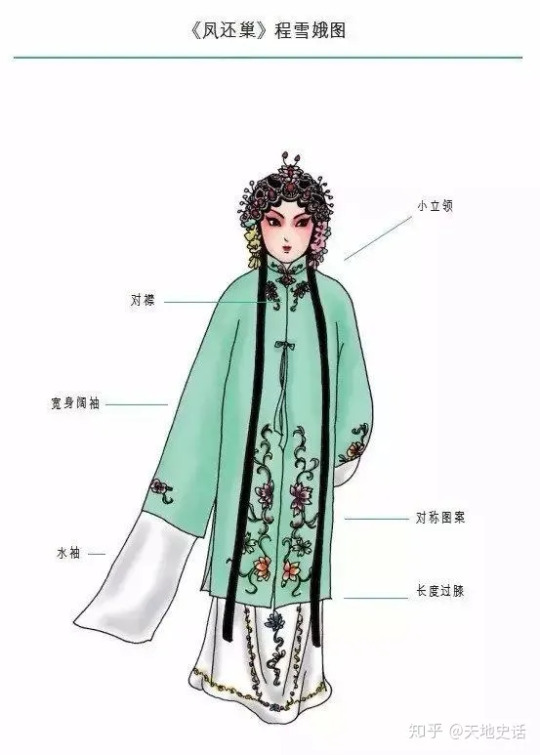
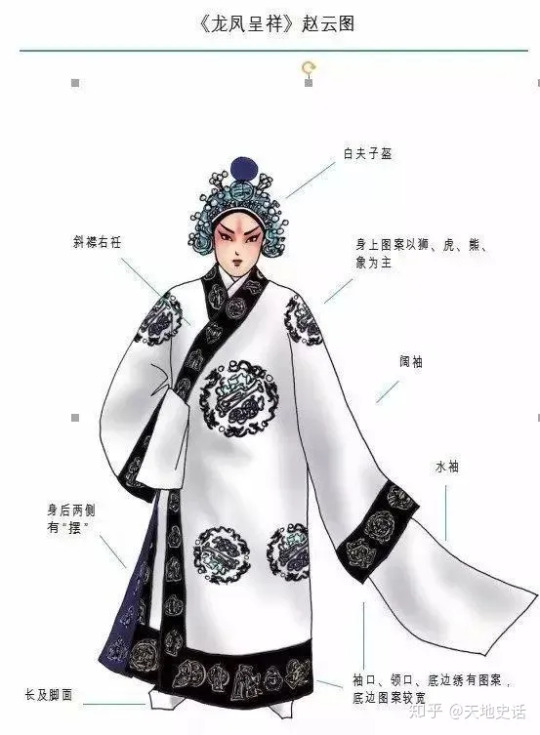



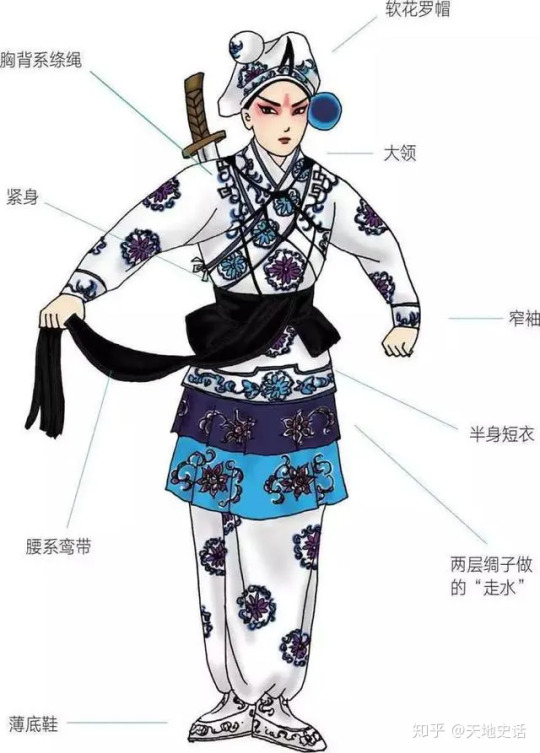


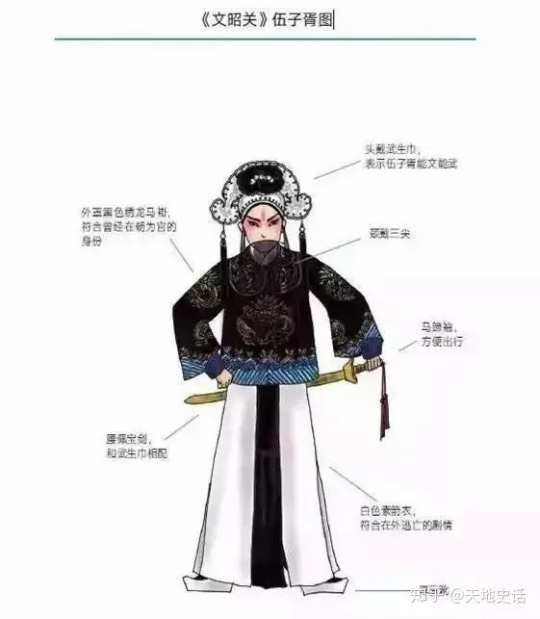
For more information and references, please see my Beijing opera, Chinese opera, and opera costume tags.
Hope this helps! (Beijing opera image via)
#beijing opera#chinese opera#opera costume#hanfu#xifu#art#ask#reply#>100#history#reference#chinese clothing#chinese fashion#china
250 notes
·
View notes
Text
The Golden Orchid Society was a collection of organizations in South China that began during the Qing dynasty and existed from approximately 1644 to 1949 when they were banned because they were associated with an attempt to overthrow the Manchu Emperor. Over 300 years, however, they created an order of women who stood in solidarity with other women against heterosexual marriages that were oppressive at best and far too often abusive. While some of the women may have been heterosexual and avoided marriage for reasons unrelated to their sexuality, the association clearly made a space for members who were lesbians or bisexuals. Queer women found the safety and family in the Golden Orchid Society that their biological relatives had often never provided them.
Support Making Queer History on Patreon
Send in a One-Time Donation
#golden orchid#chinese history#lgbt history#china#queer history#queer#lgbt#lesbian history#making queer history
86 notes
·
View notes
Text

thanks so much to @gatoraid for commissioning this piece of a scene from 'a man of letters'. extra extra thanks for the help with the research after i realised i've never actually drawn them in canon setting. apart from descriptions from the books and what's depicted in official illustrations, the articles we used you'll find cited under the cut, as well as alternate versions of the piece


1. Oka, I. (2015). MONGOL CLOTHING IN THE YUAN PERIOD. Acta Orientalia Academiae Scientiarum Hungaricae, 68(4), 385–414. http://www.jstor.org/stable/43957434
2. LUO(罗玮) Wei. (2018). A Preliminary Study of Mongol Costumes in the Ming Dynasty. Social Sciences in China. https://doi.org/10.1080/02529203.2018.1414417
3. Serrano, Alexander Jesus, "THE MANCHU QUEUE: A COMPLEX SYMBOL IN CHINESE IDENTITY" (2022). Electronic Theses, Projects, and Dissertations. 1496. https://scholarworks.lib.csusb.edu/etd/1496
4. the sleeveless overcoat ayushiridara is wearing is depicted in the 'Vajrabhairava mandala' silk tapestry: metmuseum.org/art/collection/search/37614
Peace out, mwah mwah
#the radiant emperor#he who drowned the world#she who became the sun#wang baoxiang#ayushiridara#the third prince#baob3i#my art
143 notes
·
View notes